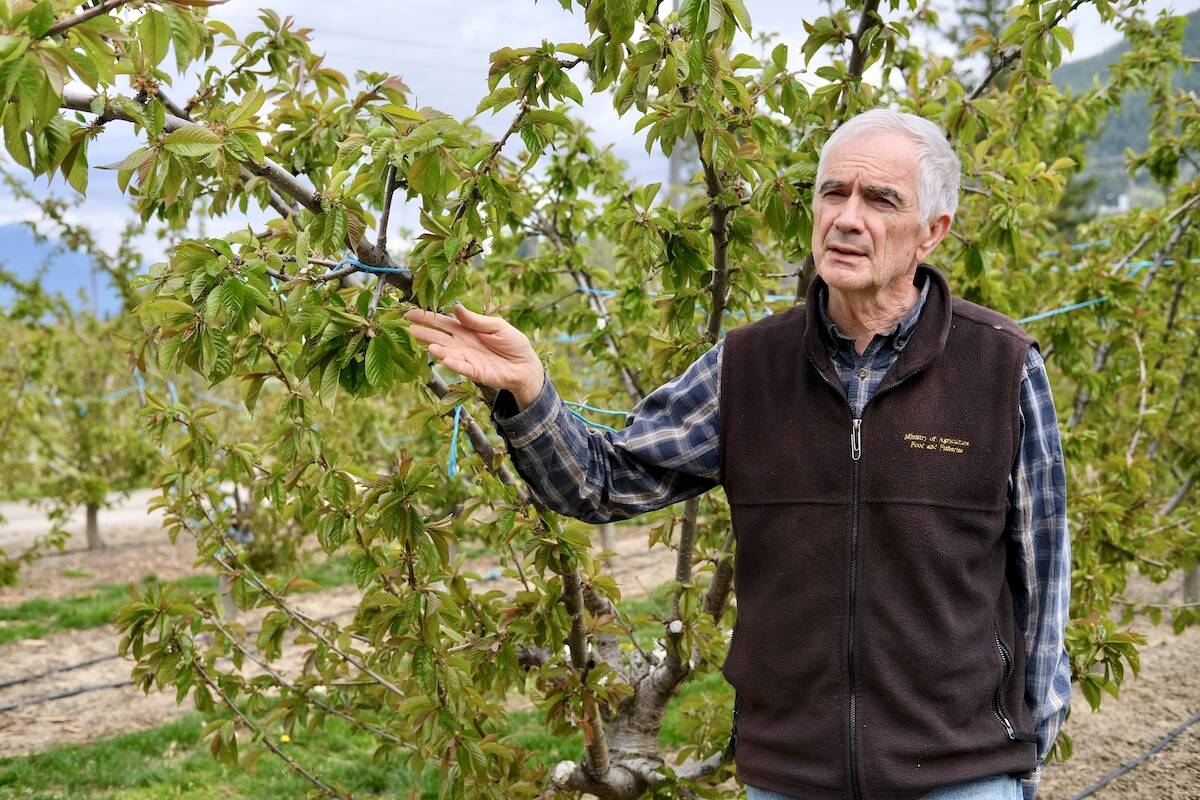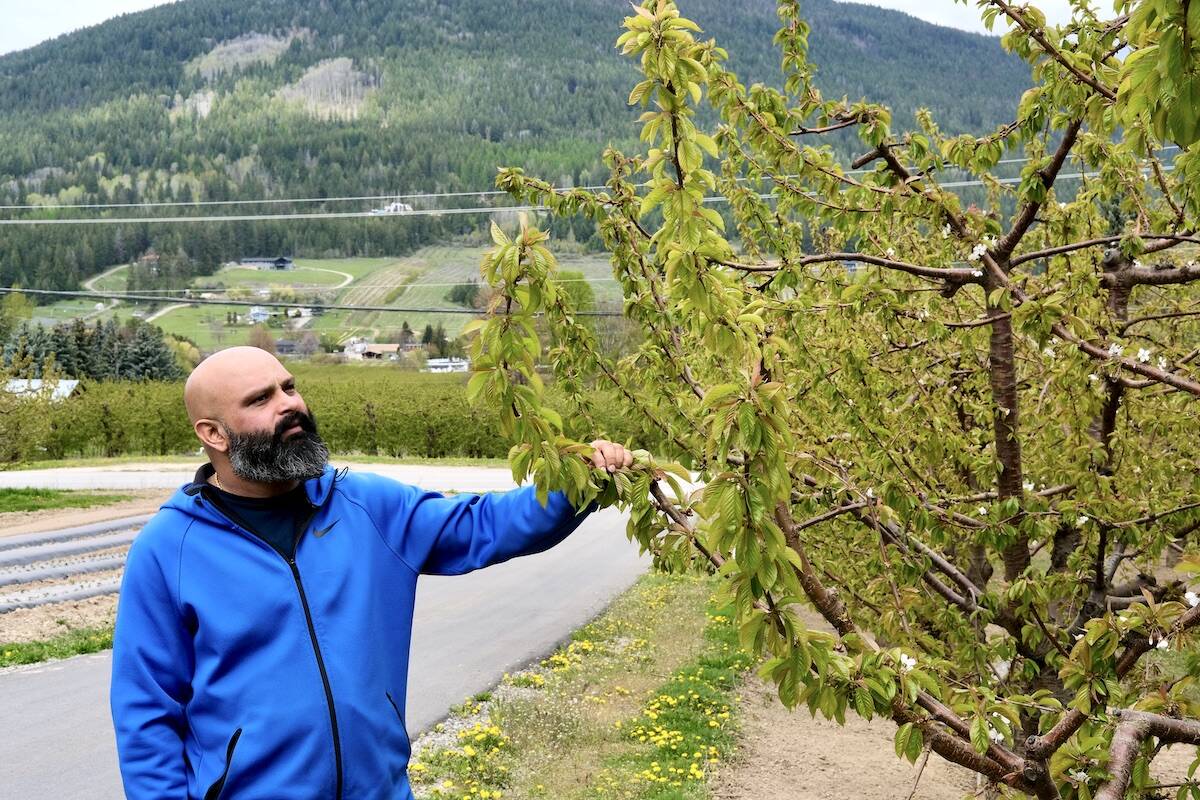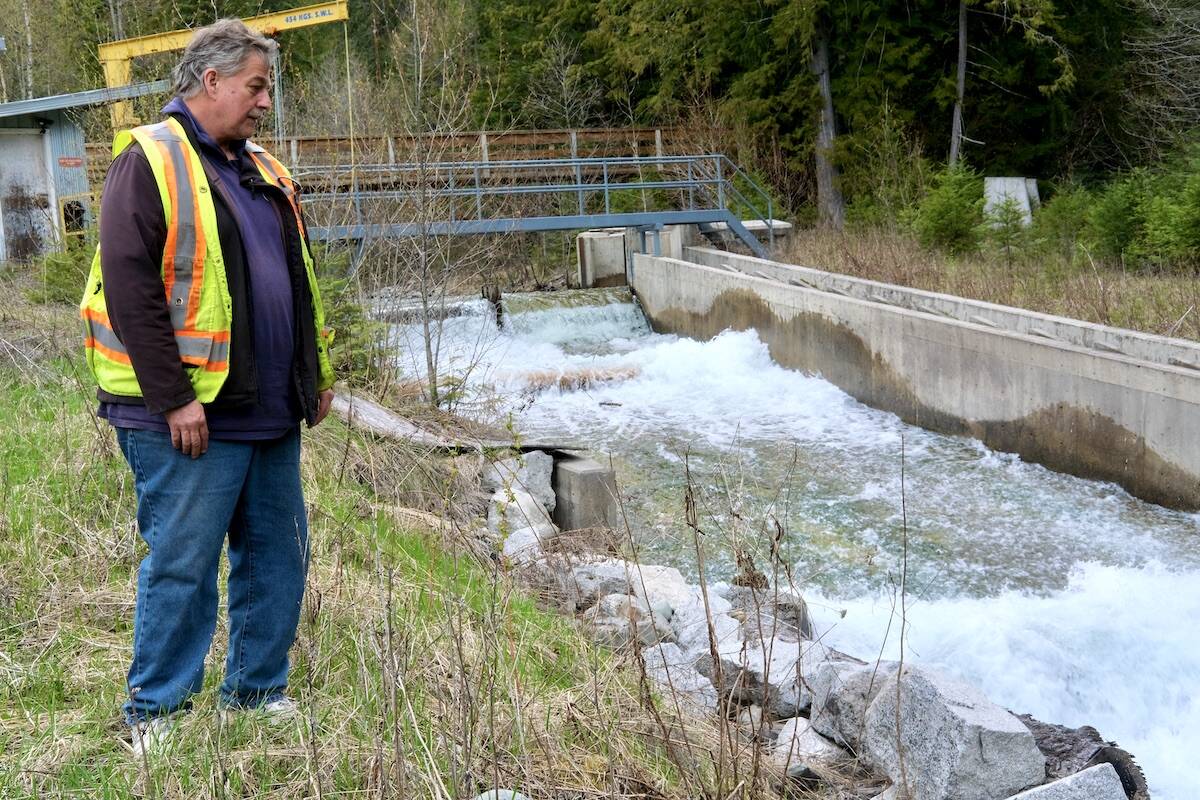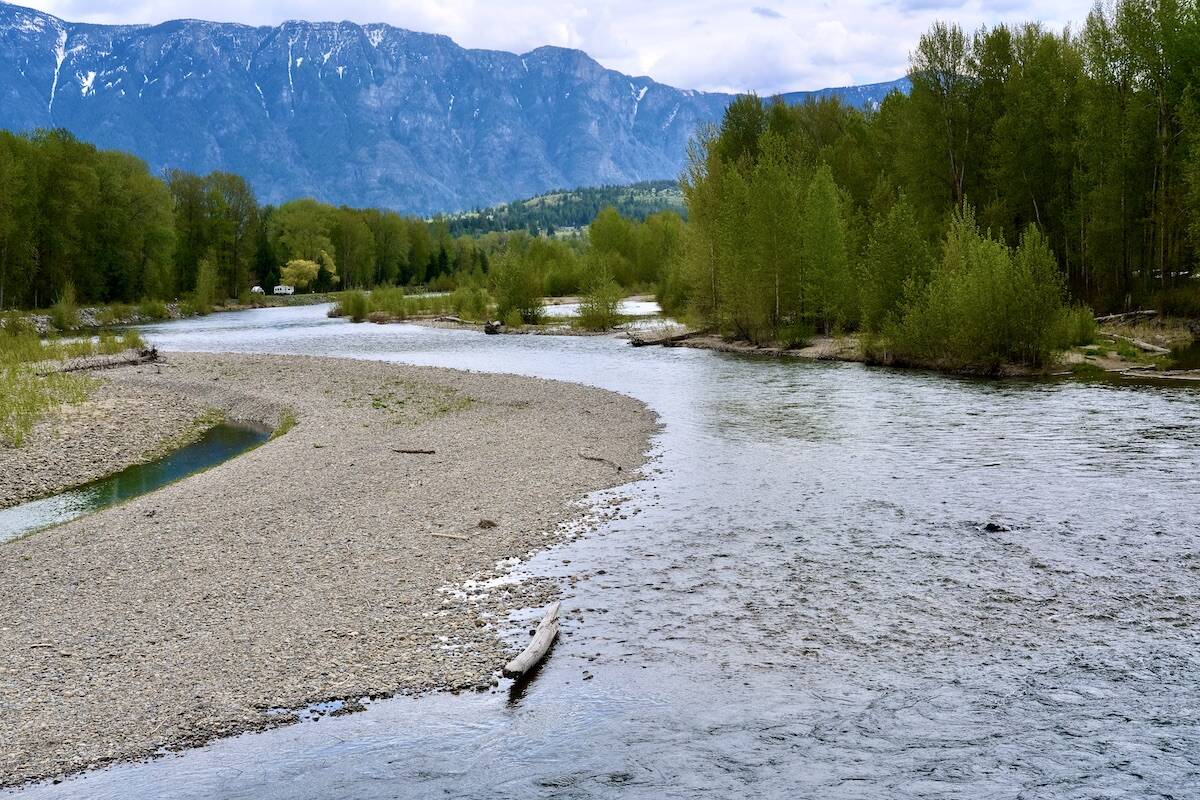In the finale of this four-story series, we look at what the reduced snowpack means for agriculture in the Creston Valley. In case you missed them, read part one on drinking water, part two on outdoor recreation, and part three on wildlife.
High temperatures, a declining snowpack and impending water shortages are a climate change trend that have farmers in the Creston Valley worried.
Raj Smagh, who has farmed just under 100 acres of cherries since 2010, says farmers have had several bad years of either no crop or poor ones.
“It has been like this for three or four years,” he says. “Surviving has become very hard for farmers. Usually you can have a bad year and survive, but this is the fourth year. The scale is not balanced any more.”
In February, all of the 35-40 commercial cherry farmers in the area lost this year’s crop due to an extreme frost that fell to -28 C in February. The frost killed the parts of the flowers that make the fruit.
But it was not the frost alone that did the damage, says longtime Creston orchardist and market gardener Frank Wloka.
“The cold was the final straw, but the part that killed the trees was nine weeks of abnormally warm temperatures (beforehand).”
Because of the unseasonably warm weather, the trees had come out of dormancy, making them vulnerable to frost when the temperature dropped.
Wloka says some of his trees are now collapsing and dying because of damage to the cambium layer, which feeds any buds that may have survived.
“This is my first experience of losing a crop and then losing the trees,” he says.
In 2021, much of the crop was lost because of heat and drought, and the two ensuing years were worryingly dry, with concerns about whether the area’s main water source, Arrow Creek, was up to the task of irrigating the crop through to harvest time.
One morning in July 2021, a group of 38 residents of South Canyon got a surprise when they turned on their taps. “Nothing,” says Brad Ziefflie, one of the residents. “No water.”
In the rural community southeast of Creston, the water bubbles up from a groundwater spring into a containment structure, then flows into a local distribution system. The residents had been observing a drastic drop in the water level over a few days, and then suddenly it was dry.
They relied on bottled water as well as on water transported from Creston for 18 days until their supply inexplicably returned.
Ziefflie says nothing like this had happened before, and the community lives with the uncertainty of “not knowing when it is going to happen again, and knowing it probably will.”
The South Canyon incident acted as a wake-up call for the Creston Valley, heightening local awareness of the precarious nature of their water supply in a time of climate change.
The Creston area is the most extensive and productive agricultural area in the West Kootenay, with open, wide valleys that produce and export field crops, tree fruits, beef, dairy products and wine.
Concerns about water led to a decision in April by the Regional District of Central Kootenay to commission a $100,000 engineering study on possible additional water sources for the area, with the initial report due in December.
Wloka says it is “extraordinarily important” that the RDCK is doing this, but he fears that it has come too late and the process will take longer than the urgency of the situation requires.
“We are in a terrible situation for water supply in the whole area,” he says.
Arrow Creek: is it enough?
The West Kootenay snowpack was only at 72 per cent of normal this year on April 1, according to the province’s monthly Snow Survey and Water Supply Bulletin.
“This year because we had such a warm winter, we did not get the snowpack accumulation we normally get…,” says Calvin Beebe, a provincial government hydrologist based in the Kootenays, “which means in order to get through the summer months we will be more reliant on precipitation to feed stream flow.”
Water supply depends not just on the snowpack but on the timing of precipitation. The ideal situation, according to Beebe, is “water in the right place at the right time for people to use.”
Southeastern B.C., he says, has seen drier conditions over the past three years than in the previous 10, and that this amounts to “fairly significant drought.”
Most of the domestic and irrigation water in the Creston and Erickson area (with the exception of some wells) comes from Arrow Creek, a tributary of the Goat River that flows through Creston and Erickson before it joins the Kootenay River.
Beebe says what determines water availability for the community is the low flow, rather than year-round average. This is because minimum flows usually occur in the late summer, when demand is the highest.
Since 2017, minimum flows in Arrow Creek have been well below the average annual minimum. August streamflows in Arrow Creek have also been below the long-term monthly mean since 2012.
The water plant on Arrow Creek, owned and run by the RDCK, diverts water at a maximum rate of 320 litres per second from the creek, treats it, then releases it into the water distribution system to about 600 users — a mix of farms, residences, and businesses.
In a hot summer, this diversion and treatment takes up more than half the creek, says head plant operator Allan Richardson. Some farmers say that in the late summer the plant’s maximum output is sometimes not enough for their needs.
“Some years we can just barely keep up,” says Richardson. “In the heat of the summer, agriculture takes the majority of the consumption.”
The treatment process that Richardson oversees includes screening and settling, and then treatment with membrane filtration for physical removal of microbiological components, and ultraviolet light and chlorination disinfection of bacteria and viruses.
Don Low is a retired orchardist and agricultural economist who, from 1992 to 2003, was the district agriculturalist (a provincial government job that no longer exists) for the area. He currently sits on an RDCK advisory committee on water issues in Creston.
Low says treating irrigation water to such an advanced degree is unnecessary and expensive. He says the plant, constructed in the late 1990s, is “a Mercedes Benz system, when all we needed was a Chevrolet.”
The RDCK built the water plant in the late 1990s, he says, after Interior Health decided the water from Arrow Creek needed treatment. To avoid a conflict with a local anti-chlorination lobby, the RDCK installed a plant with advanced technology that would require only minimal chlorination but rely on an advanced filtering system that Low says “far exceeded anything that would be normally put in to treat irrigation water.”
The filtration plant costs hundreds of thousands of dollars every four years just to replace its filter cartridges, Low says, adding that this contributes to the high rates farmers pay the RDCK for water — about $350 per acre this year, up from $20 per year before the new system was installed.
“There are two issues,” Low says. “One is the peak demand of the plant — they are at their capacity — and the other is a decrease in Arrow Creek flow, which is alarming. So we’ve got an extremely expensive water system that … barely provides enough water for current demand, and doesn’t provide enough water for future demand.”
Will the Arrow Creek distribution system run out of water?
“During the heat dome in 2021 it was close,” Low says. “There’s a lot of water comes down in the spring. But in the summer, it can be just not much more than a trickle.”
Low says the water for irrigation should instead be pumped into the system from the Kootenay River. This may be one of the options considered in the new RDCK feasibility study.
The scope of that study includes a forecast of water needs for agricultural, domestic and other uses; recommendations of feasible additional sources; and an estimate of the costs and required infrastructure for each. The budget for the feasibility study is $100,000, with $75,000 of this funded by the provincial government.
Yaqan Nukiy
To the uncertainty about water for households, orchards, gardens, vineyards, and businesses, add Yaqan Nukiy’s (Lower Kootenay Band’s) concern about fish.
“We’ve always been interested in making sure that the kokanee have a good spawning habitat,” says Isaac Dekker, watershed stewardship co-ordinator for the band. “In theory the Goat River should be a good place for fish to spawn, and yet year on year we have noticed very few spawners.”
At the Arrow Creek water plant, there is a fish ladder in the creek so fish can bypass the infrastructure. Plant operator Richardson says he rarely sees fish using it.
Dekker, who is a PhD candidate in hydrology, says the band is doing water monitoring on the Goat River, looking at volume, temperature, and sediment in the river.
“We’re not saying that bad habitat in the Goat is the cause of lack of kokanee. I think that would be too simplistic. There’s many causes for the kokanee collapse.”
This flow monitoring is a part of a much larger multi-year Yaqan Nukiy project: a Goat River cumulative effects study that is looking at the cumulative impacts of land use changes. This includes agriculture, but also forestry, which Dekker says can have a significant impact on snowpacks.
Will the various demands on limited water set up a competition between different user groups?
“I think there often is (a conflict of priorities) with water issues,” Dekker says. “But I don’t think that it necessarily means that we can’t find a common solution.”
MELTDOWN:
• Low West Kootenay snowpack threatens drinking water drawn from creeks
• West Kootenay ski hills struggled without reliable snow fall




